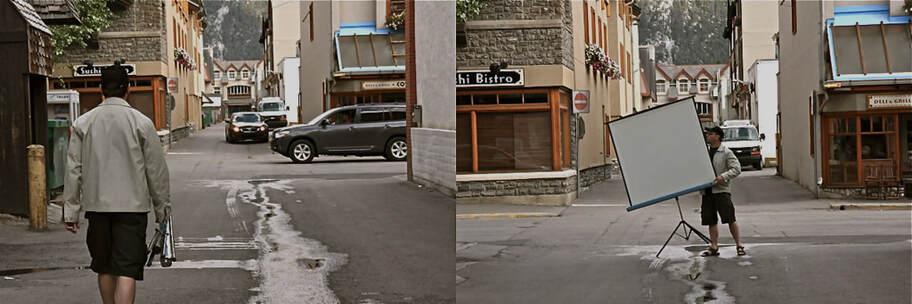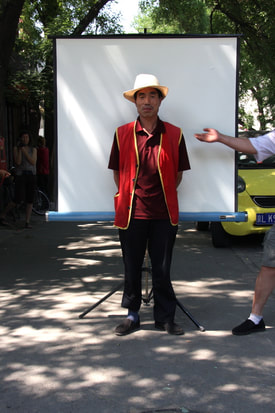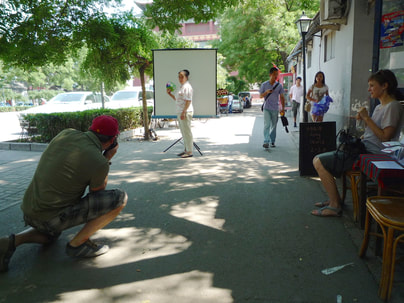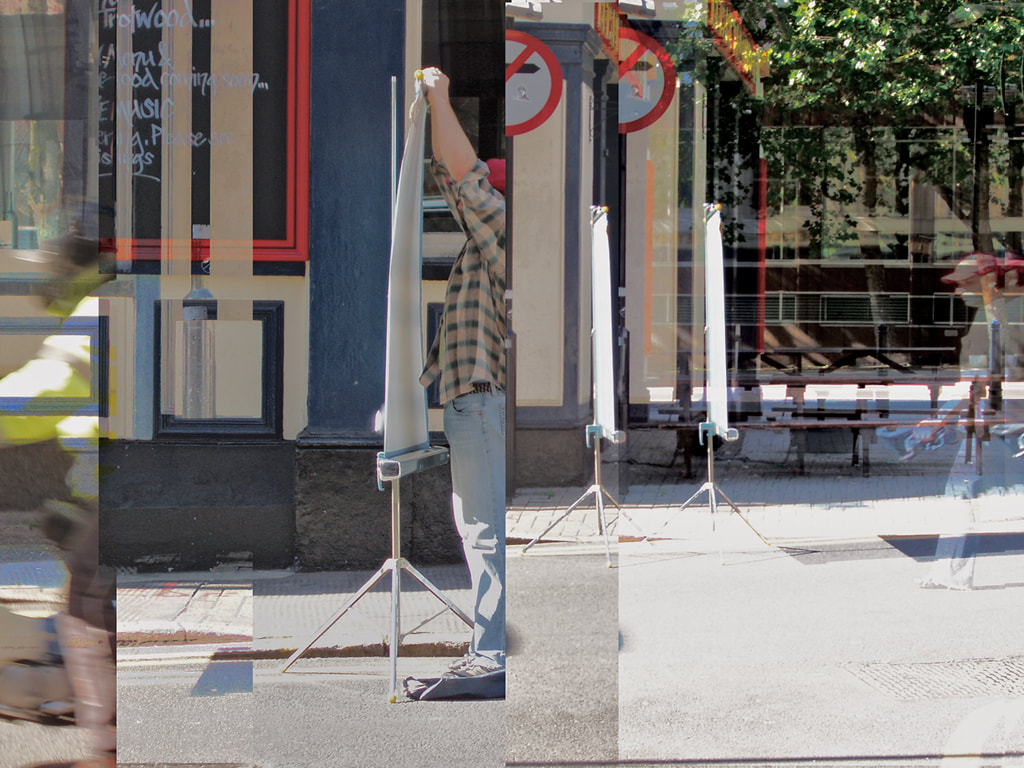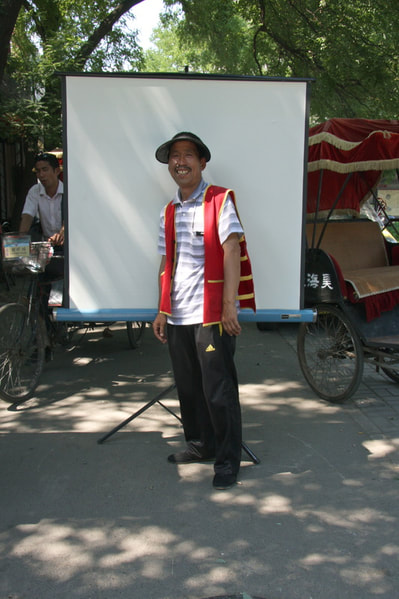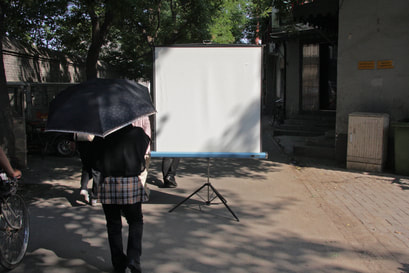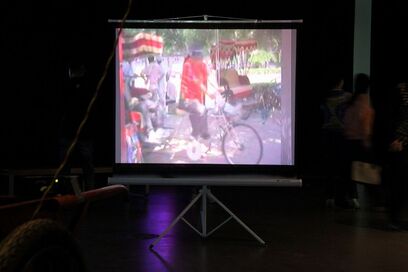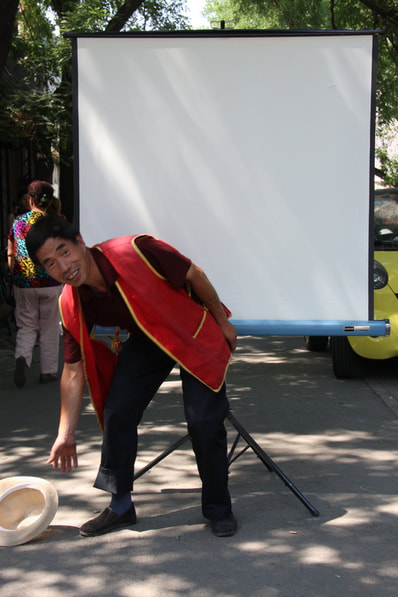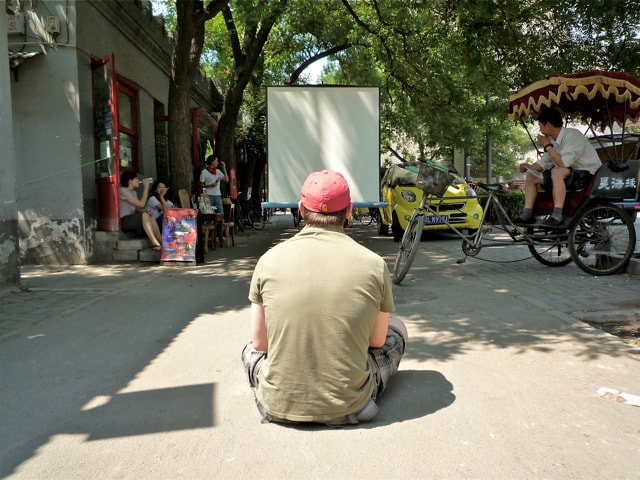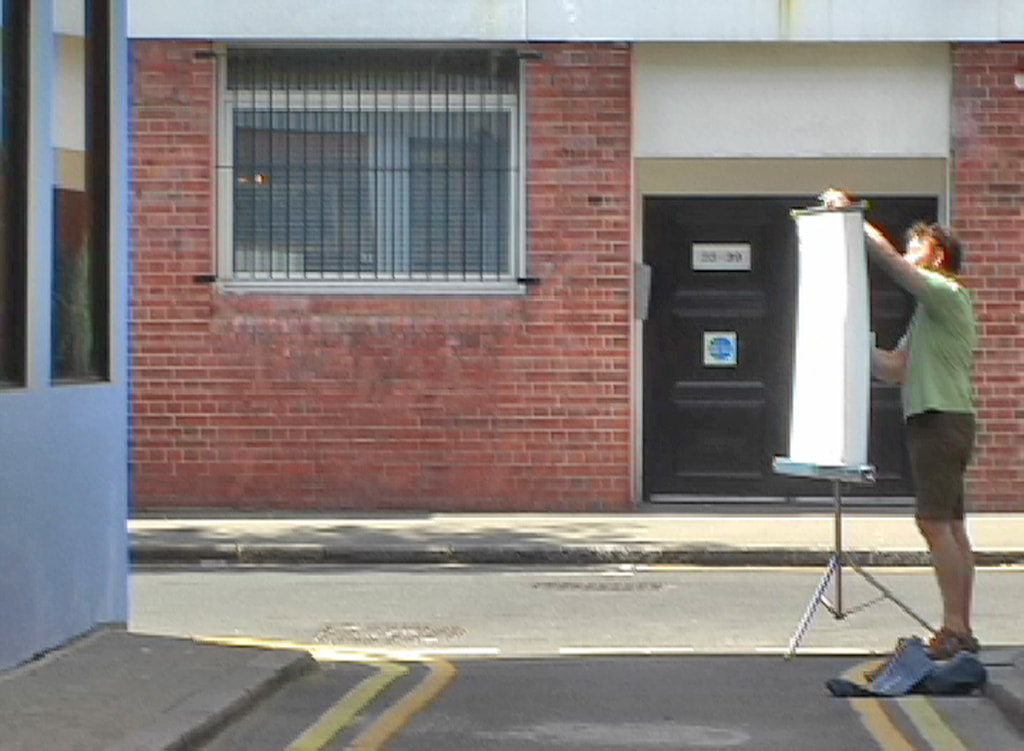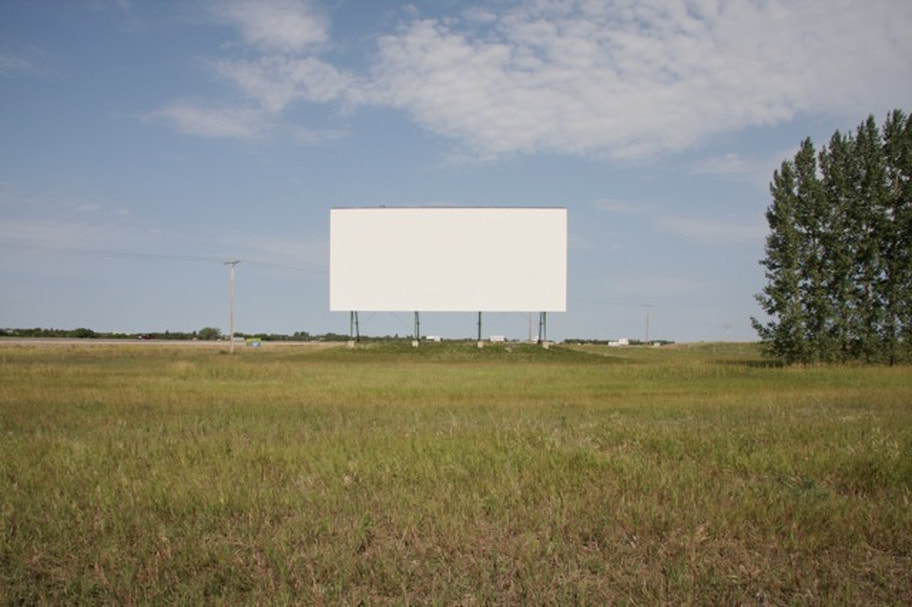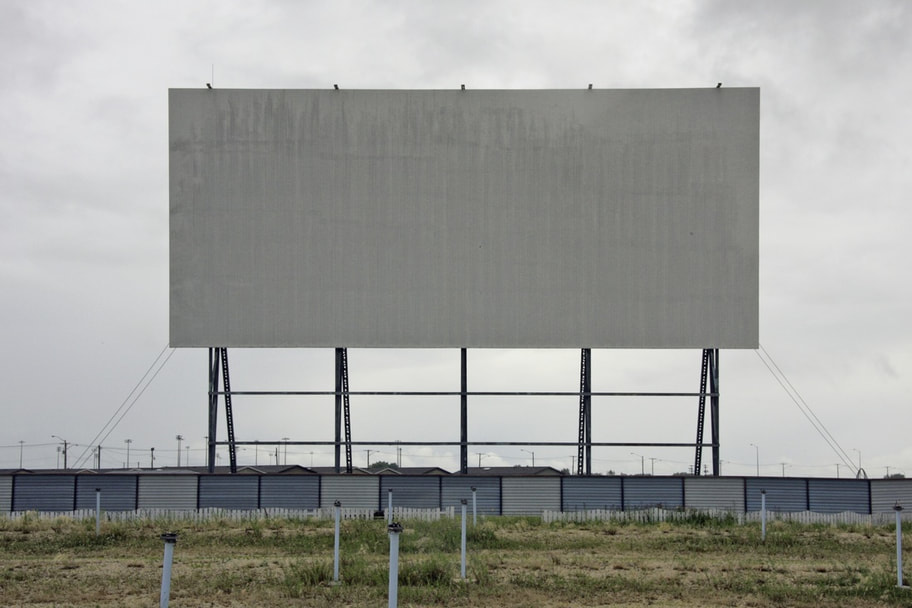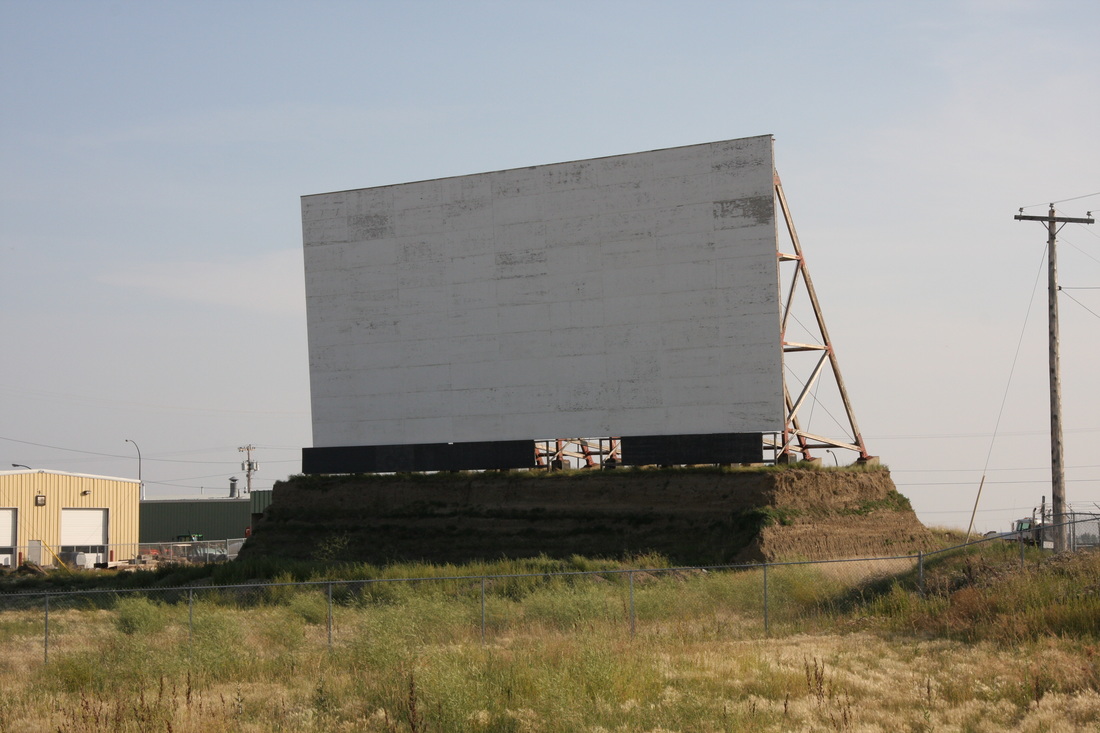Screening #1 at the Drum and Bell
Screening #2, Anjialo, 2min. 48 sec, 2009
"Screening" performative/videos are one aspect of "screen research, based on cinematic theory. I invented a mythic character that became a recipe of one part "key Grip" that halls film set equipment from place to place, the 2nd part is a tourist lost in a new country, and quite lost. The 3rd part references the era of silent movies. In his 1916 film entitled Behind the Screen, Charlie Chaplin's character (David) is hired to work on a movie set that is well in progress when the movie begins. Chaplin's "clowning" bumbles his way though the film production. My street performances are filmed with me in character, with the film sites carefully selected, but with no script to follow or other performers. Passers-by form the narrative, his film was the soul inspiration for me, I suppose I am looking for "a wizard behind the screen". My photo/video/installation research project explores psycho-social relationships between screens as a hypnotic devices and cinematic screen theory. From the "silver screen to the iPad, screens mediate experiences in our lives by computing, communicating or entertaining. Either of them put us into some form of "trance". There is much written and said about insuring our awareness of cameras and of screen-time, but much less about the psychological power screens in-and-of themselves.
Screenplay #4, High Noon, 2min.28, 2010
Still-photon Screenplay #4, High Noon, 2min.28, 2010 |
|
Screen-scapes, digital images from 2007-2017
Screen Theory: is a performance/photo/video/installation research project exploring psycho-social dynamics between screens as magical, hypnotic devices. The screen gained even more power in our age of ZOOM . People no longer respond to lenses the way they did even a few years ago. "Camera awareness" has become a daily routine – cameras/screens have become house hold feature. They are normalized, and not being aware of the phenomena is clearly unhealthy My interests to reduce them to analog by examining the bond between them in order and reclaim what photographer Henri Cartier-Bresson called, "the decisive moment" .
When not in use (off) screens are anti-heroic and could be liked to a hammer or other tool, becoming tropes. When "on" they become animated power-objects mediating our neurons.
When not in use (off) screens are anti-heroic and could be liked to a hammer or other tool, becoming tropes. When "on" they become animated power-objects mediating our neurons.
Between the Drum and Bell, video section 1:30min, Beijing, Cn 2014
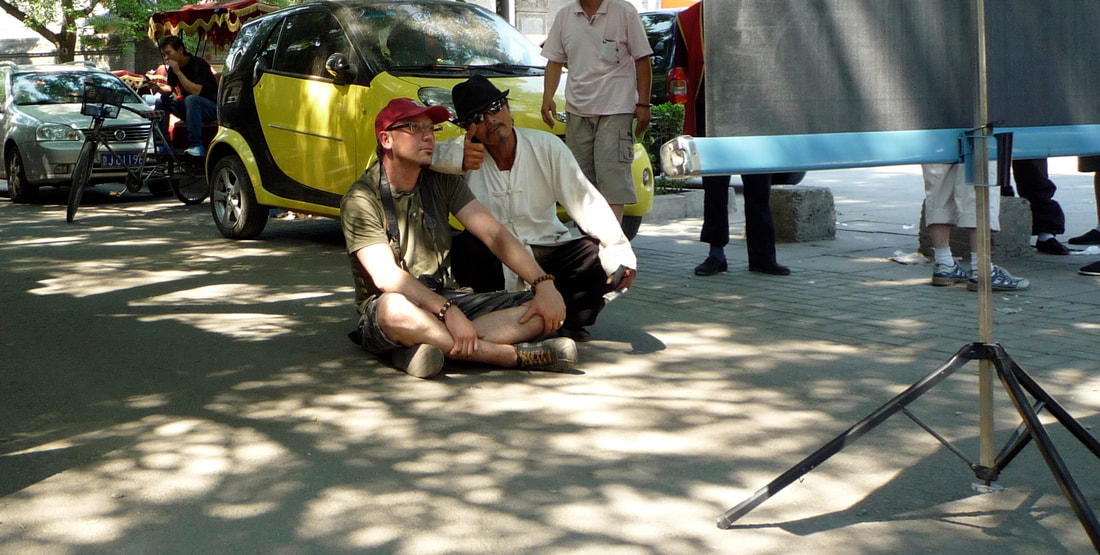
In downtown Beijing, there are two buildings that are separated by a public meeting space. One building has a bell that was hand-rung with mallet, the other building is has a giant drum. Together these buildings were the clock for the Forbidden City and date to 1700 BC. Now it is a bustling area with s mix tourism. The men in the red vests were rickshaw drivers that I became friendly with. Screenings at the Drum and Bell was a series of days that included 2 videos and shots with me and rickshaw drivers that participated in the videos. The video works were based on Charlie Chaplin. The photography series became an off-shoot of the video In China to use posters or other devices for something that could be viewed as propaganda, is dangerous. I was told that many that saw what I was doing, viewed what I was doing as a political statement,
Field Screening #1, Digital print on aluminium, 40"x60" Collection of Confederation Art Centre, PEI , Canada
Field Screening #2, Digital print on aluminium, 40"x60" Collection of Confederation Art Centre, PEI , Canada
Field Screening #3, Digital print on aluminium, 40"x60", Collection of Confederation Art Centre, PEI , Canada
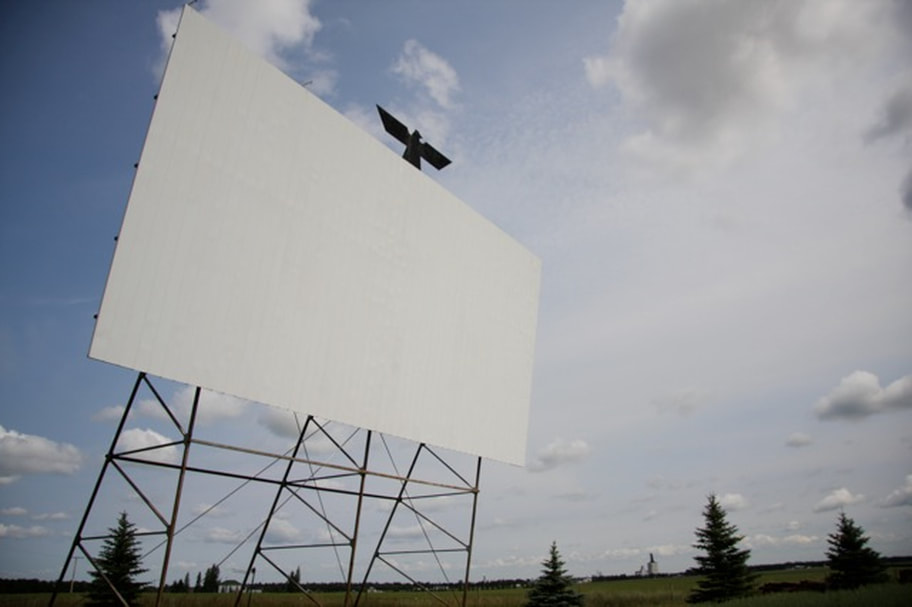
Field Screening #4, Digital print on aluminium, 40"x60", Collection of Confederation Art Centre, PEI , Canada
